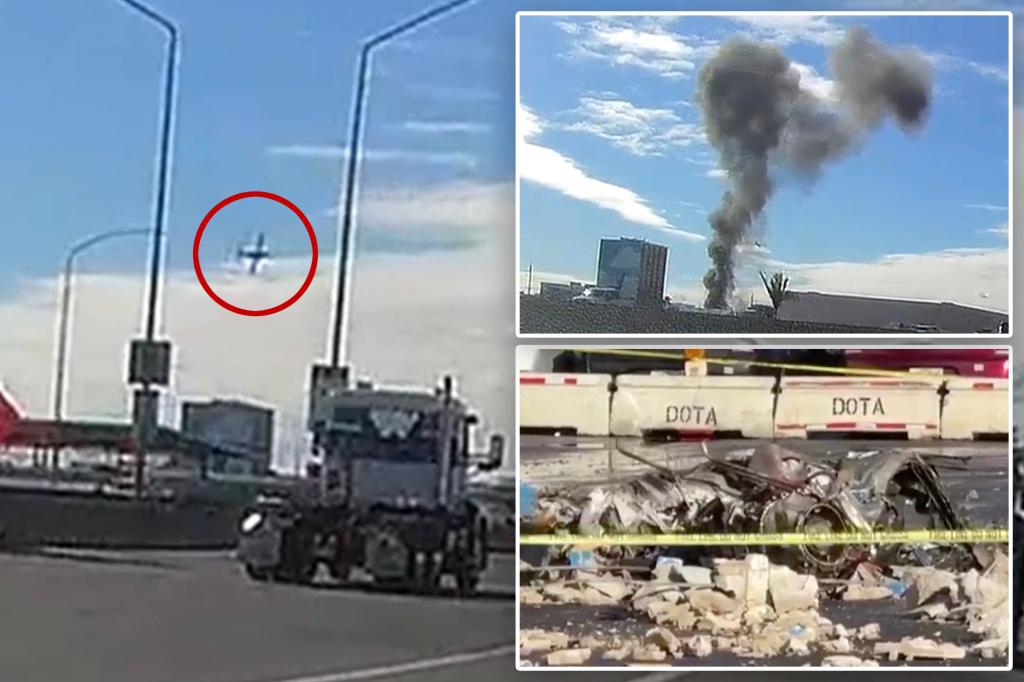The skies over Honolulu, Hawaii, were marred by tragedy on a Tuesday afternoon as a small plane, identified as Kamaka 689, crashed into a building near Daniel K. Inouye International Airport, claiming the lives of both individuals on board. The harrowing incident, captured in a chilling video from a nearby highway, unfolded rapidly as the aircraft, flying unusually low, suddenly dipped out of sight before erupting in a fiery explosion. The video footage, coupled with released audio recordings of the exchange between the pilot and the control tower, paints a grim picture of the final moments of the flight. The control tower, sensing the impending disaster, desperately attempted to guide the pilot to safety, urging him to land on any available runway. However, the pilot’s final, chilling words, “We’re out of control here,” confirmed the dire situation.
The identities of the victims have not been officially released by authorities, but sources close to the families informed local news outlets that one of the deceased was Hiram Defries, a pilot-in-training. The tragic loss of these two individuals has sent shockwaves through the aviation community and the local Hawaiian community. The investigation into the cause of the crash is underway, led by the National Transportation Safety Board, who will meticulously examine all available evidence to determine the factors that contributed to this devastating event. The investigation will likely include a thorough analysis of the plane’s maintenance records, the pilot’s training and experience, weather conditions at the time of the crash, and any other relevant data that can shed light on the sequence of events leading to the tragedy.
Amid the devastation, a sliver of relief emerged as it was confirmed that the plane crashed into a vacant, state-owned building slated for demolition. This averted a potentially far more catastrophic outcome, preventing further loss of life and minimizing damage to populated areas. Honolulu Fire Department Chief Sheldon Hao described the impact location as a “best-case scenario,” a stark reminder of how much worse the situation could have been. Officials commended the pilot’s apparent efforts to steer the failing aircraft away from populated areas, highlighting his courageous attempt to mitigate the impact of the crash. Ed Sniffen, director of the Hawaii Department of Transportation, praised the pilot’s actions, stating, “This could have been much, much worse, but the situation was limited to the two that was flying the plane… from what we understand the pilot made a lot of adjustments to minimize what they hit.” This testament to the pilot’s skill and presence of mind in the face of imminent danger offers a small solace amidst the tragedy.
The crash sent shockwaves through the local community, with numerous eyewitnesses recounting the terrifying moments leading up to and following the impact. The sudden roar of the low-flying plane, the subsequent loud bang, and the billowing plumes of black smoke painted a vivid picture of the disaster. Nancy Timco, who witnessed the plane’s descent from her seventh-floor office window, described the aircraft flying unusually low before banking towards the airport and then hearing the deafening explosion. Another witness, working nearby, recalled a sudden, powerful boom followed by the sight of thick smoke rising into the air. These firsthand accounts underscore the sudden and unexpected nature of the crash, leaving an indelible mark on those who witnessed the tragic event.
The crash of Kamaka 689 serves as a stark reminder of the inherent risks associated with aviation, even during routine training flights. While flying is statistically safer than many other forms of transportation, accidents like this underscore the importance of rigorous safety protocols, ongoing training, and thorough investigations to identify and prevent future tragedies. The National Transportation Safety Board’s investigation will be critical in determining the cause of this crash, providing valuable insights that can contribute to improving aviation safety and preventing similar incidents. The findings of the investigation will be shared with the aviation community, regulatory bodies, and the public, contributing to a collective effort to enhance safety and minimize the risks associated with air travel.
The aftermath of the crash brings a wave of grief and questions, as families and the community grapple with the loss of the two individuals on board. The focus now shifts to supporting the families of the victims, providing them with the necessary resources and emotional support as they navigate this difficult time. The aviation community, too, will be reflecting on this tragedy, using it as an opportunity to reinforce safety procedures and honor the memory of those lost. The investigation, while crucial for understanding the technical aspects of the crash, also serves as a catalyst for continuous improvement in aviation safety, reminding everyone of the importance of vigilance and preparedness in mitigating the risks inherent in flight. The hope is that lessons learned from this tragedy will contribute to making the skies safer for all.

